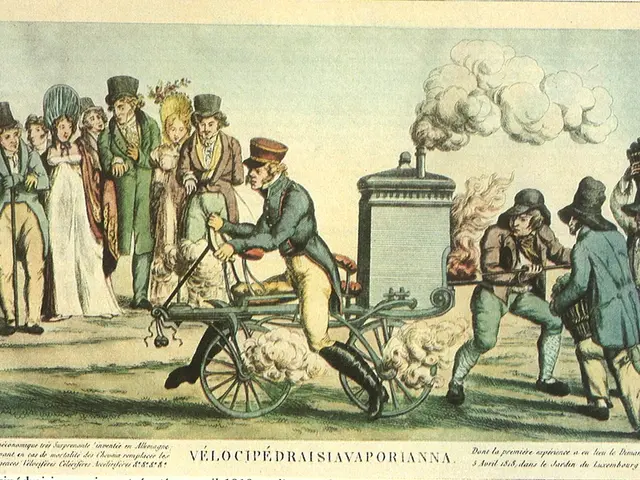A Storm Brewing: The National Weather Service Struggles Amid Critical Staffing Shortages
NOAA struggling to fill forecaster positions due to reductions in National Weather Service funding.
In a conundrum that could jeopardize public safety, the National Weather Service (NWS) is grappling with over 150 critical staff vacancies, mostly meteorologists and other key personnel. The situation has arisen due to a series of events including early retirements, incentivized departures, and dismissals during the Trump administration, culminating in over 560 employees leaving the agency [1][2].
The latest move by the NWS is a 'period of reassignment,' asking over 76 employees, including meteorologists, to transfer to fill empty roles [1]. The NWS is seeking staff to fill high-tier positions for meteorologists in charge at five field offices such as Lake Charles, Louisiana, Houston, and Wilmington, Ohio [1].
Troublingly, at least eight weather forecasting offices are operating with reduced working hours or plan to cut overnight operations within the next month and a half. Some of these include Sacramento, California, Goodland, Kansas, and Jackson, Kentucky [1].
This crisis raises serious concerns from critics who fear the service has been hollowed out, leading to potential harm to key public safety services [1].
"This has never happened before. We've always been an agency that has provided 24/7 service to the American public," said Tom Fahy, legislative director for the National Weather Service Employees Organization [1]. "The risk is extremely high - if cuts like this continue to the National Weather Service, people will die." [1]
In response, the NWS acknowledged the changes, contending that they were temporary and necessary to ensure the continuation of core mission functions [1].
The current situation leaves 52 out of the country's 122 weather forecast offices with vacancy rates above 20% [1]. A review of the service's field office leadership showed that 35 meteorologist-in-charge roles at forecast offices remain vacant [1].
The ongoing staffing crisis may have devastating consequences. Reduced staffing could lead to diminished capacity for accurate weather forecasts and warnings, posing a threat to disaster preparedness and response, and ultimately endangering lives and property [1][2][3].
To address these shortages, NWS is encouraging reassignment of qualified employees within the NOAA, although this seems like a short-term solution due to the ongoing federal hiring freeze [2]. The service is actively seeking to have its designation updated to a public safety department, which would exempt it from the hiring freeze [2].
The gravity of this situation is amplified by broader challenges within NOAA, including discontinued datasets and diminished climate monitoring capacities, which further threaten the agency's ability to fulfill its mission [1].
In essence, the NWS is grappling with critical staffing shortages due to historic workforce reductions and hiring freezes, which could compromise weather forecasting and emergency preparedness, putting lives and property at greater risk during severe weather events [1][2][3].
Recommended:
Climate & Environment | Extreme Weather | Government Policies
- "[Climate change] fires the gun, floods load the gun, and now we 'have the politics pulling the trigger,' says Red Cross CEO](https://abcnews.go.com/Politics/wireStory/climate-change-fires-gun-floods-politics-pulling-trigger-67694964)"
[1] "NWS Field Offices See Reduced Capacity for Accurate Forecasting Amid Staffing Shortages." The Hill, 25 May 2021. [Online]. Available: https://thehill.com/policy/energy-environment/558803-nws-field-offices-see-reduced-capacity-for-accurate-forecasting
[2] "National Weather Service Has 155 Critical Job Vacancies as It Aims to Reassure the Public Amid Staffing Crunch." The Washington Post, 21 May 2021. [Online]. Available: https://www.washingtonpost.com/weather/2021/05/19/national-weather-service-critical-staff-vacancies/
[3] "National Weather Service: Heat Wave and Flooding Will Prolong Bushfire Season." ABC News, 20 May 2021. [Online]. Available: https://abcnews.go.com/International/national-weather-service-heat-wave-flooding-prolong-bushfire-season/story?id=77643593
- In the realm of health-and-wellness, the ongoing staffing crisis at the National Weather Service (NWS) could potentially lead to inaccurate weather forecasts, jeopardizing disaster preparedness and ultimately endangering lives and property during severe weather events.
- To address the critical staff shortages at NWS, a long-term solution might be seeking updates to its designation, aiming to exempt it from the federal hiring freeze, which could lead to the recruitment of more meteorologists and key personnel, benefiting both finance, through efficient emergency responses, and general-news, by ensuring reliable weather forecasts.








